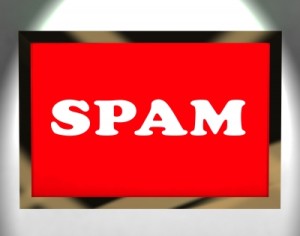 Steve Sipress
Head Rhino & Chief Strategist
Steve Sipress
Head Rhino & Chief Strategist
Heather Seitz: Is Your Email Landing In the Spam Folder?

Image courtesy of Stuart Miles at FreeDigitalPhotos.net
There are essentially 3 places your email messages are going:
- The Inbox (Naturally this is the intended goal, but not always the case unfortunately).
- The Spam Folder(This is getting harder and harder to control due to changing rules with the email services)
- Missing Somewhere in Cyberspace(According to Returnpath, 16% of all email goes missing. In other words, it doesn’t get stuck on the server, it doesn’t get to the inbox, it doesn’t go to spam, and it doesn’t bounce back)
The other thing that can happen is that the email address bounces back for any number of reasons such as IP address issues, bad URL in the message, content block, bad address, etc. (We have discussed these in other articles on www.EmailDelivered.com).
The other thing that can happen is that the email address bounces back for any number of reasons such as IP address issues, bad URL in the message, content block, bad address, etc. (We have discussed these in other articles on www.EmailDelivered.com).
The first thing that we look at when we’re trying to improve the effectiveness of email campaigns is to look at the email deliverability.
Once we’ve addressed the issue of email deliverability, the next main issue online business owners and marketers are concerned about is inbox placement of their email messages. In other words, that their email messages are not automatically being placed into the spam folder.
There are several things that you can do to improve your email inbox deliverability AND to test possible causes of placement.
#1. Make sure your email server settings are correct. This is beyond the scope of this article, but you’ll want to make sure you have your SPF records set up, abuse contacts, etc. If you’re using a 3rd party email provider, then you are limited on how much data you can access and will have virtually no control over these settings.
#2. Run your email through a content filter like Spam Assassin or similar. Be sure to include all the header information in your test so that you can get an accurate report. NOTE: this is not a guarantee of inbox placement as all providers have their own unique algorithms, but it will help with content blocks.
#3. Check your IP address. Make sure your IP address is not on any blacklists. If you’re using a 3rd party email provider, you can’t test all of the potential IP addresses, but you can send yourself a test message and find the IP address from the header information in the message and check that.
#4. Check any URLs that are in your email body copy to make sure they’re not on a blacklist. There are a number of places that you can test your URLs to make sure they’re not on a blacklist. You can find a list of some of the popular sites at EmailDelivered.com/emailmarketing.
Assuming that all of these are not issues, then it’s time to try and isolate the problem in your email.
There are several things that you can try.
- Make sure you’re actively removing complaints from subscribers. Subscribers that click “Report as Spam” or similar in their email client have indicated they don’t want your messages, so remove them promptly.
- Maintain good list hygiene by regularly removing soft bounces after multiple attempts and hard bounces promptly.
- Split test email copy.
- Modify your from/reply to address in your email header. This information can be modified in almost any email client and can make a difference with certain providers.
Recently, we had a client that was having challenges with a popular email provider sending their messages to the spam folder regularly. We went through multiple troubleshooting steps and what we found was that one of the providers was sending all of the messages from a specific from (and reply to) email address into the spam folder. When we changed that address, the messages were delivered to the inbox.
Conversely, several of the other providers delivered the email messages with the new email address to spam.
The Lesson: pay attention to deliverability, inbox deliverability, and messages delivered to the spam folders and test various elements to try to isolate the problem.
Once you know what the problem is, it’s relatively easy to solve it.

Recent Comments